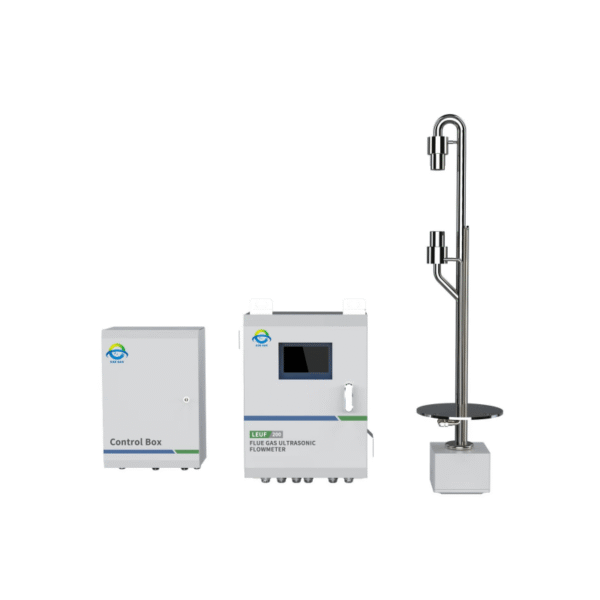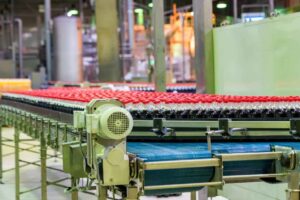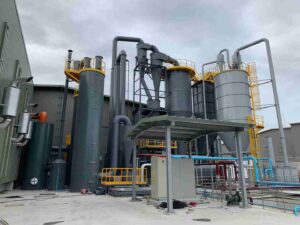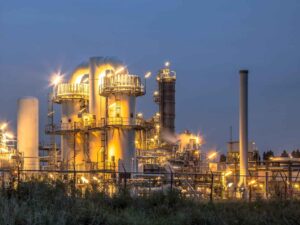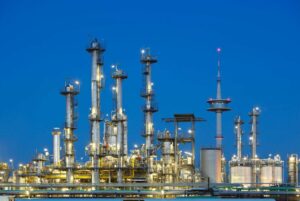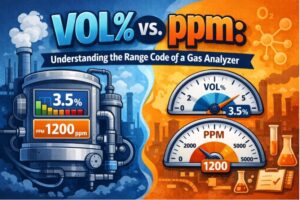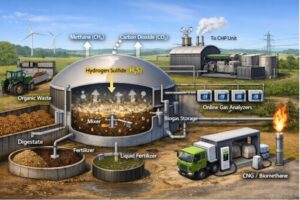With the advancement of industrial technology and the increasing level of automation, the metal smelting industry is facing multiple challenges in terms of production efficiency, energy consumption, and environmental protection. As a typical energy-intensive industry, the metal smelting process requires strict control of the flow of raw materials and energy. Flow measurement technology plays a crucial role in this, and ultrasonic flowmeter with its high precision, low maintenance costs, and not affected by the physical properties of the medium, has become the metal smelting industry to improve the production efficiency of the tool.
This paper will explore the application of ultrasonic flowmeter in metal smelting from various perspectives, focusing on how it can improve production efficiency, reduce energy consumption, and achieve sustainable development in key aspects.
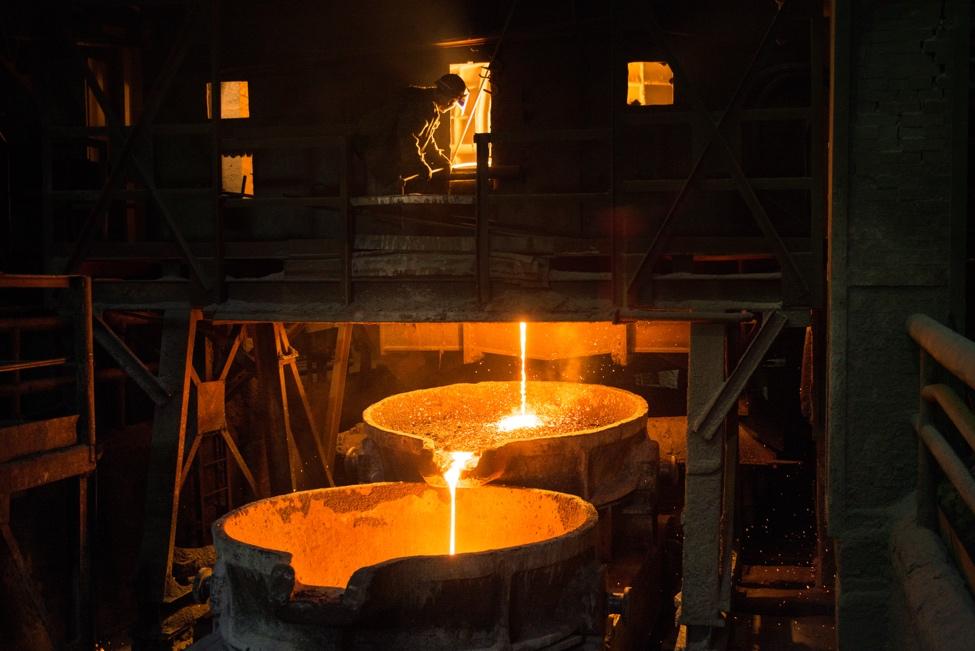
Flow Control Needs of the Metal Smelting Industry
The metal smelting process is complex and energy-consuming, from the primary treatment of the ore to the refining and casting of the metal, each stage requires precise control of the flow of materials and energy, mainly involving the following key links:
- Raw material transportation: Raw materials such as ores and fluxes need to be transported to the smelting furnace according to a certain ratio, and any deviation from the ratio may lead to fluctuations in the quality of the final product.
- Supply of fuel and combustion gases: The combustion process in smelting furnaces requires precise control of the supply of fuel and combustion gases, and the improvement of combustion efficiency is directly related to the improvement of energy utilization and the reduction of production costs.
- Fluid Transportation in Cooling Systems: Metal smelting requires effective cooling systems to ensure that smelting equipment operates properly under high-temperature conditions and to avoid equipment damage.
- By-product treatment: The treatment of by-products such as waste gas, waste liquid, and waste slag generated in the smelting process also requires precise flow control to meet environmental requirements.
In these links, the traditional flowmeter such as differential pressure, turbine type or electromagnetic flowmeter is widely used, but its working principle determines its in the face of high temperature, high pressure, poor media conditions, measurement accuracy, and reliability there are certain limitations. The ultrasonic flowmeter with its advanced working principle, can better adapt to these harsh environments, thus improving the productivity of the entire smelting process.
The Working Principle and Advantages of Ultrasonic Flowmeter
Ultrasonic flowmeter by measuring the difference in sound wave propagation time in the fluid, to calculate the flow rate of the fluid. The common ultrasonic flowmeter has two main ways of working:
Time difference method and Doppler effect method.
- Time Difference Method: Utilizes the time difference between the propagation of sound waves in a fluid with and against the flow to calculate the velocity of the fluid. Since the speed of sound wave propagation in a fluid is affected by the flow rate of the fluid, this method is very effective in the measurement of most industrial fluids, especially for clean liquids and gases.
- Doppler effect method: The flow rate is calculated by measuring the change in frequency of ultrasonic waves reflected in a fluid containing particles or bubbles. This method is more suitable for measuring multiphase fluids, especially liquids or gases containing solid particles in smelting processes.
Ultrasonic flowmeter has the following advantages:
- Non-contact measurement: The ultrasonic flowmeter can be measured through the pipe wall without contacting the fluid, avoiding wear and corrosion of the equipment. This is a great adaptability to the smelting industry for special media such as high-temperature and high-pressure gas, cooling water, and so on.
- High-precision measurement: The ultrasonic flowmeter can achieve high-precision measurement, the error is usually within ± 1%, and the measurement results are not subject to the physical characteristics of the medium (such as temperature, pressure, viscosity, etc.) significant impact.
- Low maintenance cost: Because there are no mechanical moving parts, ultrasonic flowmeter has a long service life and low maintenance needs, suitable for long-term use in such a harsh environment as smelters.
- Strong adaptability: whether it is liquid or gas, single-phase flow, or multi-phase flow, the ultrasonic flowmeter can be a stable measurement. This feature makes it in the changing smelting process can be applied flexibly.
Ultrasonic Flow Meter in Metal Smelting in Specific Applications
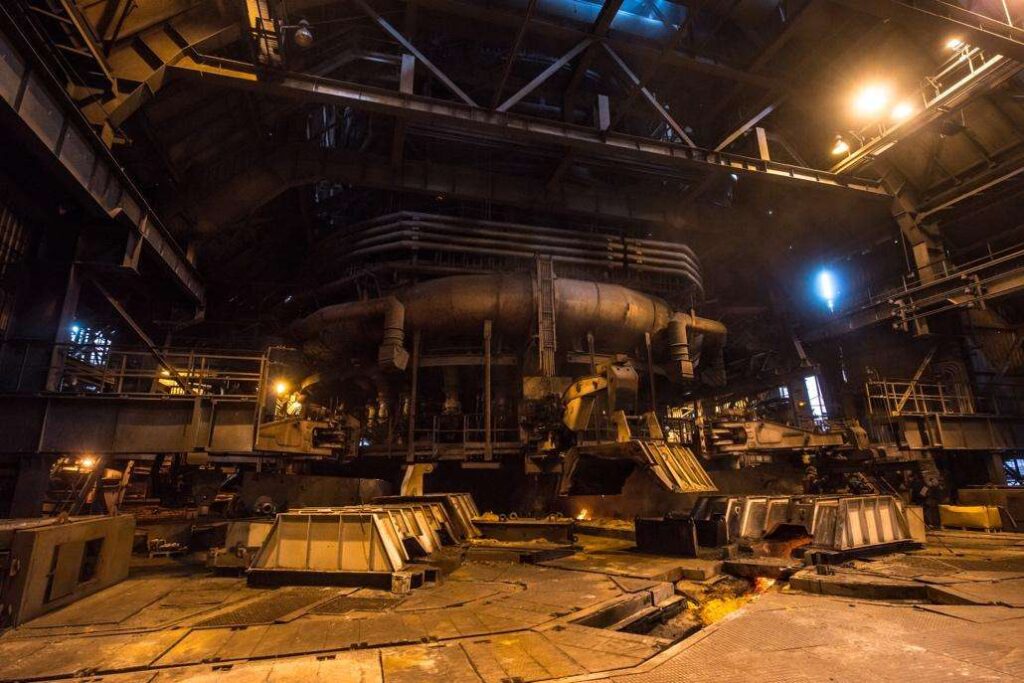
1. Accurate control of fuel supply
In the metal smelting process, the fuel supply to the smelting furnace is critical. Ultrasonic flow meters can accurately monitor the flow rate of fuel in real-time to ensure the optimal ratio of fuel to combustion gases. This not only improves combustion efficiency and reduces energy waste, but also lowers smelting costs.
Especially in the modern automated smelting control system, an ultrasonic flowmeter can be connected with a PLC (Programmable Logic Controller) and other control equipment to realize the automated and precise control of fuel and combustion gases to ensure the continuity and stability of production.
2. Optimization of cooling water systems
In the high-temperature environment of the smelting process, the cooling system is a vital component. Improper control of the cooling water flow rate will not only affect the life of the smelting equipment but may also lead to production interruptions. Ultrasonic flow meters can monitor the flow rate of cooling water in real time, helping factories optimize the cooling system and ensure that equipment always works within a safe temperature range.
Compared with the traditional flow meter, ultrasonic flowmeter non-contact measurement can be better adapted to the cooling system in high temperature and high-pressure environments, while avoiding the pipeline because of dirt, corrosion, and other factors on the impact of flow measurement.
3. Exhaust gas treatment and environmental monitoring
The smelting process will produce a large number of exhaust gases, such as sulfur dioxide, nitrogen oxides, etc., the emission of these gases needs to comply with strict environmental standards. The ultrasonic flow meter can accurately measure the gas flow in the exhaust gas treatment device to ensure the normal operation of the exhaust gas treatment system. By combining the exhaust gas monitoring system, the factory can effectively control the emission of harmful gases and reduce environmental pollution.
In addition, the high adaptability of an ultrasonic flowmeter can cope with exhaust gas containing dust particles, liquid droplets, and other complex components, to provide stable and accurate flow data, to help factories optimize the process of exhaust gas treatment and improve environmental protection benefits.

4. Precise dosage for raw material transportation
In the smelting process, the accurate proportioning of raw materials is an important factor in ensuring product quality. The ultrasonic flowmeter can be used to monitor the transportation process of raw materials such as ore and flux to ensure that the raw materials enter the smelting furnace in proportion. At the same time, the ultrasonic flowmeter can also provide real-time feedback on the flow of materials to help smelters make dynamic adjustments to improve the accuracy of the batching.
Especially for fluid raw materials or containing particles of the mixture, an ultrasonic flowmeter can provide reliable data, to avoid the traditional flowmeter in the face of non-homogeneous media may appear when the measurement error.
Ultrasonic Flow Meter on Smelting Efficiency Improvement
The balance between productivity and energy consumption in the metal smelting industry is the key to improving the competitiveness of smelting companies and realizing sustainable development. In the smelting process, flow control directly affects the utilization rate of fuel, product quality, and the stability of production equipment. Ultrasonic flowmeter as a high-precision, highly adaptable measurement equipment, can effectively improve the smelting efficiency, specifically in the following aspects:
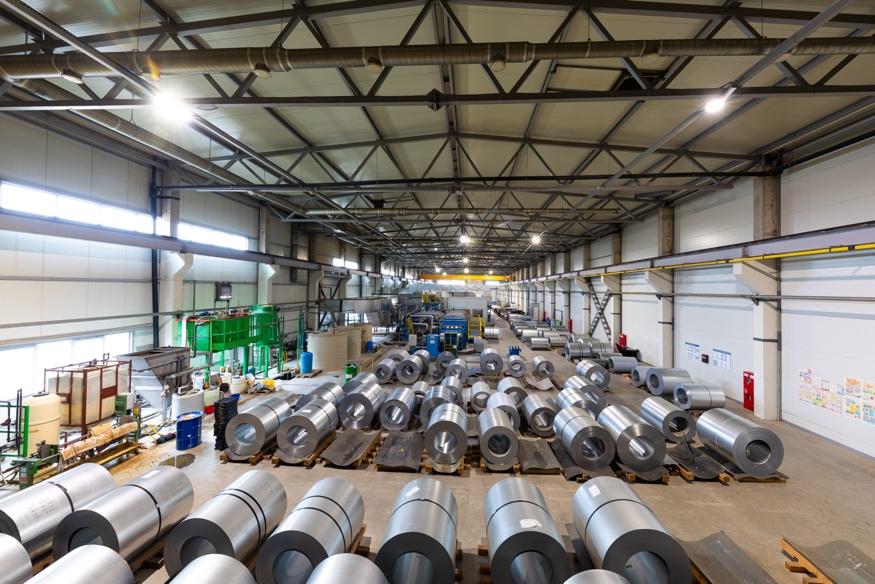
1. Reducing energy consumption
Energy consumption is one of the main costs of the smelting industry, especially in the operation of smelting furnaces, the consumption of fuel is very huge. Ultrasonic flow meter through the fuel and combustion gas flow of accurate control, to help the plant in the following areas to reduce energy consumption:
(1) Accurate supply of fuel
The combustion process in smelting furnaces needs to maintain a specific ratio of fuel to combustion gases (such as air or oxygen), and any deviation will affect combustion efficiency. Conventional flow meters in high temperature, high pressure, or corrosive gas environments, often due to wear or clogging lead to inaccurate measurement, and can not accurately control the fuel supply. The ultrasonic flowmeter through non-contact measurement, can avoid these problems, even in extreme environments can still maintain high accuracy measurement.
Through the accurate monitoring of fuel flow, ultrasonic flowmeters help factories ensure the optimal utilization of fuel, reducing the oversupply of fuel and avoiding energy waste. Especially in natural gas, gas, and other gaseous fuels supply control, ultrasonic flowmeter applications significantly reduce energy costs.
(2) Optimized regulation of combustion gases
The amount of combustion gas supplied also affects the combustion efficiency of the smelter. Too much combustion gas reduces the combustion temperature and leads to incomplete combustion of the fuel; too little combustion gas limits the combustion reaction. Ultrasonic flow meters can monitor the flow of combustion gases in real-time, helping the plant to accurately adjust the gas supply to maintain optimal combustion conditions.
By optimizing the regulation of combustion gases, smelters can significantly improve the combustion efficiency of fuels and reduce energy losses due to incomplete combustion.
(3) Feedback control systems to reduce energy consumption
In modern smelting plants, ultrasonic flow meters are often combined with automated control systems (such as PLC or DCS) to form a closed-loop feedback control system. Real-time monitoring of fuel and combustion gas flow data will be transmitted to the control system to automatically adjust the ratio of fuel and combustion gas to ensure that the entire combustion process is always in a highly efficient state. This automated control reduces the errors caused by manual operation and allows further optimization of energy consumption.
2. Improving product quality
The quality of products in the smelting process is closely related to the proportion of raw materials, fuel supply, temperature control, and other factors. Ultrasonic flowmeter in these key aspects of the flow control plays a vital role in helping the plant to improve the consistency of product quality.
(1) Precise proportioning of raw materials
In the smelting process, the ratio of raw materials such as ores and fluxes directly affects the chemical composition and physical properties of the metal. Ultrasonic flow meters can accurately measure the flow of these raw materials to ensure that they enter the smelting furnace according to the designed ratio.
Compared with other types of flow meters, ultrasonic flow meters can adapt to different physical properties of the fluid, especially some containing particles of the mixture or slurry. Therefore, it shows higher adaptability and stability in the flow measurement of raw materials, avoiding the traditional flow meter in the face of non-homogeneous media when the measurement is not accurate. This feature helps factories to reduce the rate of defective products due to wrong proportioning and ensure the consistency of product quality.
(2) Optimization of smelting temperature control
Smelting temperature is an important parameter affecting the quality of metal smelting. Through the precise control of fuel and combustion gas, the ultrasonic flow meter helps to maintain the temperature stability in the smelting furnace. Precise control of temperature not only improves combustion efficiency but also avoids the problem of overheating or incomplete smelting of metals, ensuring that the chemical composition and physical properties of metals meet the requirements.
In addition, the ultrasonic flowmeter is also able to work with temperature sensors and other equipment to form a comprehensive monitoring system for the smelting process, which further improves the controllability and stability of the smelting process, thus enhancing the quality of the final product.
3. Reduced equipment breakdowns and maintenance costs
Equipment in metal smelting plants operates in a high-temperature, high-pressure, corrosive environment all year round, and any equipment failure will lead to production downtime, increasing maintenance costs, and production losses. The application of an ultrasonic flowmeter helps to reduce the occurrence of equipment failure and reduces the maintenance cost of the plant.
(1) Optimized management of cooling systems
In the smelting process, cooling systems are used to protect equipment and extend its service life. Insufficient cooling water flow may lead to overheating of the equipment, which may cause equipment damage or even production accidents. The ultrasonic flowmeter can monitor the cooling water flow in real-time to ensure that the cooling system is always running in the best condition and avoid overheating of equipment caused by improper cooling.
Traditional flowmeters in high temperature and high-pressure conditions are prone to wear and tear due to equipment and lose of measurement accuracy, or due to the accumulation of scale in the pipeline which leads to inaccurate measurement. The ultrasonic flowmeter’s non-contact measurement method, will not be affected by these problems, to ensure the long-term stability and reliability of the measurement.
(2) Reduction of wear and corrosion
Because the ultrasonic flowmeter does not need to contact the measurement medium, it is in the corrosive gases or liquids in the environment and is still able to maintain a long time of normal operation. The mechanical flowmeter in this environment is often due to corrosion of the medium or high temperature and high-pressure damage and the need for frequent replacement or repair. The use of an ultrasonic flowmeter reduces the wear and tear and damage to the equipment, significantly reducing the maintenance costs of the plant.
(3) Reduction of production downtime
Through the accurate control of fuel, cooling water, combustion gases, and other fluids, ultrasonic flow meters help factories automate and optimize the management of production processes, reducing production downtime caused by equipment failure or human error. This not only improves the utilization of equipment but also enhances the overall productivity of the plant.
4. Realization of automated control and data analysis
The combination of an ultrasonic flowmeter and a modern control system promotes the smelting plant to develop in the direction of automation and intelligence. Real-time monitoring and analysis of flow data makes production management more scientific and helps the plant to continuously optimize the production process and improve overall efficiency.
(1) Real-time monitoring and feedback
The ultrasonic flowmeter is usually equipped with a data output function, which can be connected with PLC, SCADA, and other control systems of the plant, and feedback the flow data to the central control room in real-time. The control system automatically adjusts fuel supply, combustion gas ratio, cooling water flow, and other parameters according to the flow data to ensure that the smelting process is always in an optimal state. With such a closed-loop control system, the plant reduces human intervention and avoids fluctuations and instability in production.
(2) Historical data analysis and optimization
Ultrasonic flowmeter-generated flow data can be stored and analyzed to help factories conduct historical data analysis of the production process. For example, through the analysis of fuel consumption at different times, cooling water flow, the factory can find potential opportunities to improve efficiency and reduce energy consumption, and further optimize the production process.
At the same time, data analytics can also help factories predict equipment maintenance needs, avoid sudden equipment failures, and improve the stability and controllability of production schedules.
ESE Ultrosonic Flow Meter
Ultrasonic Flow Meter LEUF-200
Introduction ESEGAS Ultrasonic Flow Meter LEUF-200 for Flue Gas Application is to measure the flow rate of the gas; it can also calculate and output the volumeflow rate according to the flow rate and the flue size; if you input the temperature and pressure of the flue gas, you can calculate the flow rate under the standard conditions.
The range of applications of the system is as follows:

- Process control engineering
Chemical plants, pharmaceuticals, grain, and dairy industry processes.
Plastics processing and refining processes
- Process measurement and emission monitoring
Utility plants, e.g. power plants and boiler emissions.
Waste treatment, e.g. waste incineration plant emissions.
Basic industries, e.g. chemical, iron, and steel industries.
- Flow measurement of ventilation, heating, and air conditioning systems in agriculture and industry.
Conclusion
Ultrasonic flowmeter in the metal smelting industry in the application of the smelting process optimization and efficiency to provide strong support. Through the fuel, combustion gases, cooling water and exhaust gas treatment, and other key aspects of precise control, the ultrasonic flowmeter helps the plant reduce energy consumption, improve product quality, prolong the service life of the equipment, and realize a higher level of automated production.
As the metal smelting industry’s requirements for high efficiency, energy saving, and environmental protection continue to improve, the application of ultrasonic flow meters will have a broader future. In the future, with the further development of ultrasonic flow technology, the metal smelting industry will usher in a more intelligent and efficient development stage, laying a solid foundation for the realization of Industry 4.0.




